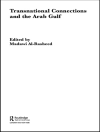World Television: From Global to Local , a new assessment of the interdependence of television across cultures and nations brings together the most current research and theories on the subject. By examining recent developments in the world system of television as well as several theories of culture, industry, genre, and audience, author Joseph D. Straubhaar offers new insights into the topic. He argues that television is being simultaneously globalized, regionalized, nationalized, and even localized, with audiences engaging it at multiple levels of identity and interest; therefore the book looks at all these levels of operation.
Key Features
- Draws upon both international communication and cultural studies perspectives: Presents a new model is presented that attempts to move beyond the current controversies about imperialism and globalization.
- Looks at historical patterns: Historical patterns across cultures and countries help compare where television has been and where it is going.
- Takes a contemporary focus: Uses of technology, flows and patterns of program development, genres of television, the interaction of producers and audiences, and patterns of audience choice among emerging alternatives are examined.
- Explores how the audience for these evolving forms of television is structured: The effects of these forces or patterns of television have on both cultural formations and individual identities are identified.
Intended Audience
This is an excellent text for advanced undergraduate and graduate courses in Globalizatiion and Culture, Global Media, Television Studies, Television Criticism, and International Media.
Tabela de Conteúdo
1. A Multilayered World of Television: An Overview
Central Issues
Globalization and Culture
Complexity, Structuration, and Cultural Agents
Structural and Cultural Process Frameworks for World Television
Roles and Impacts of Technology
Asymmetrical Interdependence and Asymmetrical Cultural Interpenetration: A Proposed Model
Imported TV Versus Local and National: Producers Localize, Glocalize, and Hybridize
Cultural Identification and Proximity
Cultural Hybridization
2. Hybridization and the Roots of Transnational, Geocultural and Cultural-Linguistic Markets
Precolonial Cultural History and Television
Hybridization
Emergent Change Versus Hybridization
Hybridity and Television
The Roots of Transnational, Geocultural, and Cultural-Linguistic Regions and Markets
Broadcasting Models: From Colonial to Postcolonial
Hybridity and National Development
3. Creating National and Regional Television and Cultural Industries
Dependency, the Cold War, and Television Industry Production
Cultural Imperialism and Media Imperialism
Local Cultural Production
Cultural Imports
The Nation-State and Television
Import Substitution in Cultural Industries
Adaptation and Glocalization of Foreign Models
The Cultural Role of States: National Security and National Identity
Cultural Industries
Achieving National Coverage via Satellite
Television Above and Below the National Level
Glocal Processes and National Identities
4. Creating Global, U.S., and Transnational Television Spaces
Globalization, Broadly Defined
Economic Globalization
Globalization as the Spread of Capitalist Modernity
Economic Neoliberalism and American Empire
Globalization, Changing National Policy, and the State
Global Spread of Market Capitalism
Migration as Globalization
Transnational Television
Asymmetrical Interdependence and World Television
5. Increasing Complexity: The Technology of Creating Global and National Television Spaces
Television Technology as a Structuring Force
Cycles of Technology
Technology and Production
Technology and Media Distribution and Flows
Satellites
TV Technology, Access, and Choice
Cable and Satellite TV Relative to Broadcast TV
6. Producing National Television, Glocal and Local
Structuring the Producers′ World
Television Genre and Structure
Cultural Industry Producers
Economic Boundaries on Television Genre and Program Development
Complexity, Patterns, and Genres
Cultural Boundaries: Feedback to Producers
Complexity, Prefiguration, and Cultural Hybridity
Glocalization
Localization as Japanization or Brazilianization
Structuration and Television Production in Brazil
The Hybrid History of the Telenovela
National Television Flows and Production
TV and Genre Flow Conclusions
7. TV Exporters: From American Empire to Cultural-Linguistic Markets
Genre Imperialism?
Genres Flowed Before Programs
Delocalization
Trends Toward Regionalization of Television
Overall Trends in Broadcast Television Flows
From Program Genre and Idea Flows to Licensed Format Flows
Localization of Global and Transnational Television Channels
Broadcast Television Genre Flows Versus Satellite, Cable, and Internet Flows
8. Multiple Proximities Between Television Genres and Audiences: Choosing Between National, Transnational, and Global Television
Culture-Bound Reception and Multiple Proximities
Cultural Capital, Cultural Proximity, and the Audience
Layers of Reception Within Brazil and Italy
Cultural Proximity Within Culturally Bound Reception Practices
9. Making Sense of World Television: Hybridization or Multilayered Cultural Identities?
From Local to Global
Multiple Levels of Audience Identity and Cultural Choices
The Process of Hybridization
Hybridization Versus Multiple Layers of Identity and Culture
Multiple Identifications
Researching Audiences and Their Identities
Cultural Geography: Cultural Distance, Global, National, and Local Identities
Language/Culture-Defined Spaces and Markets
Multilevel Identities and Social Class
Hybridization and Social Class
Hybridization: Race and Ethnic Identity
Gender Identity and Television
Layers of Identity as Boundaries for Choices and Understandings
Layers of Identities as Mediators of Media Meaning
Reconfiguration and Synthesis of Identities
Sobre o autor
Joe Straubhaar
Amon G. Carter Centennial Professor of Communication and Director of Media Studies
E-mail: [email protected]
Office: CMA 6.120
Phone: 512-471-5304
Ph.D., Fletcher School of Law and Diplomacy, Tufts University, 1981.
ARTICLE AND INTERVIEW FEATURING JOE STRAUBHAAR
Professor Joseph D. Straubhaar is the Amon G. Carter Centennial Professor of Communications in the Department of Radio-TV-Film at the University of Texas at Austin. He is also Associate Director for International Programs of the Telecommunication and Information Policy Institute at the University of Texas. He was the Director of the Center for Brazilian Studies within the Lozano Long Institute for Latin American Studies, 2003-2006.
His primary teaching, research and writing interests are in global media, international communication and cultural theory, information societies and the digital divide in the U. S. and other countries, and global television production and flow. His graduate teaching includes media theory, global media, comparative media systems, international telecommunications systems, Latin American media, and research methods. His undergraduate teaching covers the same range plus introduction to mass communication and the information society. He does research in Brazil, other Latin America countries, Europe, Asia and Africa, and has taken student groups to Latin America and Asia. He has done seminars abroad on media research, television programming strategies, and telecommunications privatization. He is on the editorial board for the Howard Journal of Communication, Journal of Broadcasting and Electronic Media, Studies in Latin American Popular Culture, and Revista INTERCOM.
His book, World Television from Global to Local, was published by Sage in 2007. A revised 6th edition of his textbook with Bob La Rose, Media Now, was just published by Wadsworth. He has an edited book, The Persistence of Inequity in the Technopolis: Race, Class and the Digital Divide in Austin, Texas, forthcoming from University of Texas Press. He had an edited book with Othon Jambeiro, Políticas de informação e comunicação, jornalismo e inclusão digital: O Local e o Global em Austin e Salvador (Information and communication policy, journalism and digital inclusion: The local and global in Austin and Salvador); Federal University of Bahia Press: 2005. Recent articles and book chapters include:
‘Broadcast Research in the Americas: Revisiting the Past and Looking to the Future. Journal of Broadcasting and Electronic Media, Vol. 50(3), 368-382, September 2006.
‘Multiple Proximities between Television Genres and Audiences: The Schism between Telenovelas′ Global Distribution and Local Consumption.’ Gazette. 67(3): 271-288.
‘(Re)asserting National Media and National Identity Against the Global, Regional and Local Levels of World Television.’ In Meenakshi Gigi Durham and Doug Kellner, Eds. Media and cultural studies: Keyworks, Revised Edition. Malden, Mass. Blackwell Publishers, 2005.
‘The centrality of telenovelas in Latin America life: Past tendencies, current knowledge, and future research.’ Global Media Journal, Vol. 2, Spring 2003.
‘Choosing National TV: Cultural Capital, Language, and Cultural Proximity in Brazil.’ In Michael Elasmar, ed. The Impact of International Television: A Paradigm Shift. Lawrence Earlbaum Associates, 2003.
He has published numerous articles and essays on global media, digital inclusion, Brazilian television, Latin American media, comparative analyses of new television technologies, media flow and culture, and other topics appearing in a number of journals, edited books, and elsewhere.












